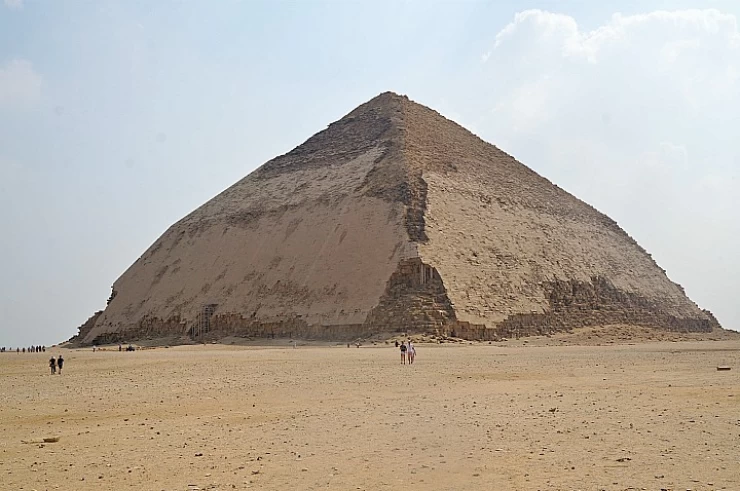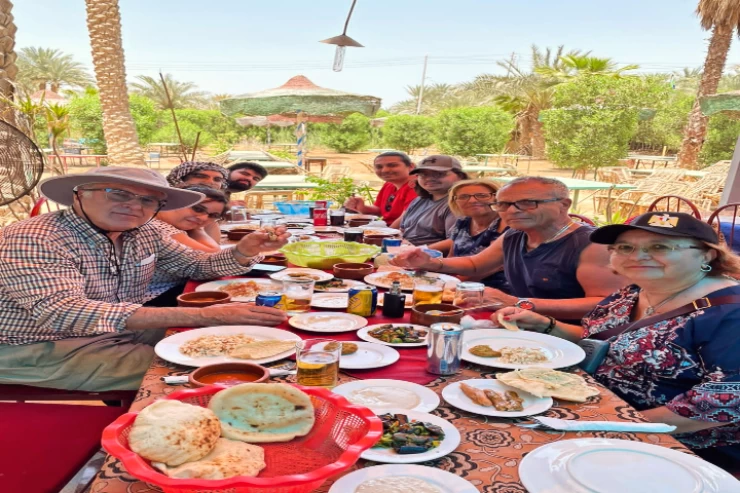
History of pyramid complex of Unas
History of pyramid complex of Unas
It is a distinctly formed, almost smooth structure that was constructed for the Egyptian king Unas, who was the ninth and last king of the Fifth Dynasty during the 24th century BC. It is the smallest of the Old Kingdom pyramids, but it is important because it contains the Pyramid Texts, the real name of which was discovered from the texts, which is Seferet Hetpet, which are recitations and hymns for a spiritual ritual performed for the king during his life inside the pyramid, and they are not spells about the afterlife engraved for the king on the walls of his underground chambers.
The tradition of funerary texts, first inscribed in the pyramid of Unas, continued in the pyramids of later rulers, until the end of the Old Kingdom, and during the period of the Middle Tanya through the Coffin Texts on which Book of the Dead is based.Unas built his pyramid between the Sekhemket and Djoser complexes north of Saqqara. A long causeway was built from the valley temple into a nearby lake to provide access to the pyramid site.
The bridge was elaborately decorated with walls covered with a roof with an opening in one section that allowed light to enter, illuminating the painted images. A long ravine served as a path. The terrain was difficult to overcome, containing ancient buildings and tomb superstructures. These structures were demolished and reused as the foundations of the bridge, and much of Djoser's causeway was also reused to build dams.
The superstructures of the tombs that were on the road were demolished and paved over, preserving their decorations. Among these tombs are those of the Second Dynasty, presumably those of Hotepsekhemwy, Nebre, and Nynetjer, as evidenced by seals found inside under the causeway. The site was later used as the burial place for several officials of the Fifth Dynasty, members of the Eighteenth to Twentieth Dynasties, and a group of Late Period monuments known as the "Persian Tombs".
The causeway connected the temple at the harbour with the mortuary temple on the east face of the pyramid. The mortuary temple was entered on its east side through a large granite entrance, apparently built by Teti, successor of Unas. These probably held two wooden boats: the boat of Ra, the sun god. The temple was built in a similar manner to that of Djedkare Isesi, with a transverse passage separating the outer from the inner temple. The chapel to enter the inner temple has been completely destroyed, although it once contained five statues in niches. A feature of the inner temple was a single quartzite column found in the "Antishamber Kari".
Latest Articles
Admin
Aswan Governerate in Egypt
One of Egypt's southern governorates is Aswan Governorate. The city of Aswan serves as its capital. At a latitude of 22 north of the equator (also known as the Tropic of Cancer), it is bounded to the north by the Qena Governorate, to the east by the Red Sea Governorate, to the west by the New Valley Governorate, and to the south by the Republic of Sudan.
Admin
Luxor Governorate Egypt
The capital of the Arab Republic of Egypt is Luxor City, which was once known as "Thebes City" because it served as Egypt's capital during the Pharaonic era. It is situated in the South Upper Egypt region, approximately 670 kilometers from the capital Cairo from the south. It is bordered on the north by Qena Governorate, on the south by Aswan Governorate, on the east by Red Sea Governorate, and on the west by New Valley Governorate.
Admin
History of kafr El Sheikh Governorate
Kafr El Sheikh Governorate is an Egyptian governorate, located in the northernmost part of Egypt in the Nile Delta, with Kafr El Sheikh as its capital. It had a population of 3,172,753 in 2015 and an area of 3,748 km². Its entire area is located north of the delta and overlooks the Mediterranean Sea. The main economic activity of the residents of the governorate is agriculture and fishing, especially the southern lands of the governorate and the lands overlooking the Nile River - Rosetta Branch.
Admin
Egypt's New Administrative Capital
The New Administrative Capital is located between the Cairo-Suez and Cairo-Ain Sokhna roads, 60 km from Cairo and the same distance from Ain Sokhna and Suez. The New Administrative Capital is located on the border of Badr City, in the area between the Cairo-Suez and Cairo-Ain Sokhna roads, just after New Cairo, Mostakbal City and Madinaty.
Admin
Al Gharbia Governorate
Gharbia Governorate is one of the governorates full of archaeological sites, whether they are places or facilities (mosques, churches), as the governorate is a destination for visitors to these places throughout the year, whether they are Egyptians from the different governorates.
Admin
Hamata Islands (Qulaan Archipelago) in Marsa Alam
The Hamata area, south of Marsa Alam in the Red Sea, is one of the most important parts of the Wadi El Gemal Reserve, whether in the desert or the sea. It was named after the sorrel plant, which was distorted to Hamata.


















